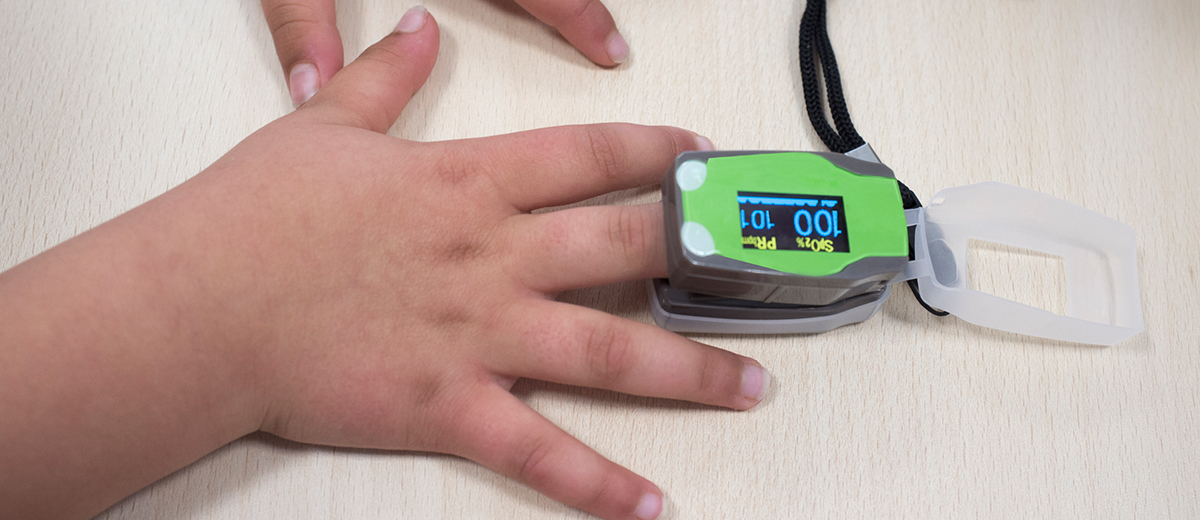More than 26 million Americans have asthma, including 6.1 million children according to the American Lung Association. It is the third leading cause of hospitalization among children.
These staggering statistics prove the value of regularly measuring blood oxygen levels on people with asthma or other breathing conditions. The most common way to assess oxygen saturation without having to be pricked with a needle is pulse oximetry. Pulse oximetry measures how much oxygen blood is carrying by using a small, clip-on device placed on a finger called a pulse oximeter.
How does a pulse oximeter work?
A pulse oximeter measures the blood oxygen level, or the oxygen saturation level (abbreviated O2sat or SaO2). The O2sat is a percentage of how much oxygen the blood is carrying compared to the maximum it is capable of carrying. Most people need a reading of at least 89% and no more than 100% to keep their cells healthy.
When taking the measurement, beams of light from the pulse oximeter pass through the blood in the finger to measure the oxygen. Having your blood oxygen level tested does not hurt – in fact, you will not feel anything! The beams of light calculate the percentage of the blood that is carrying oxygen and also provides a heart rate reading.
Are finger pulse oximeters accurate?
The oxygen level from a pulse oximeter is reasonably accurate – within 4%. However, the oximeter reading may be less accurate if a person is wearing nail polish, artificial nails, has cold hands, or has poor circulation. A pulse oximeter may also be less accurate if the person being tested has very low oxygen saturation levels (below 80%) or has very dark skin.
Why is it important to test for asthma?
Asthma is a chronic (or lifelong) disease that can be serious – even life-threatening. The good news is that with proper management, someone with asthma can live a normal, healthy life. That’s why it is important to assess children with a pulse oximeter. Click here to learn more about asthma from the American Lung Association.
Click here to shop MacGill’s selection of pulse oximeters and contact us if you have any questions.





